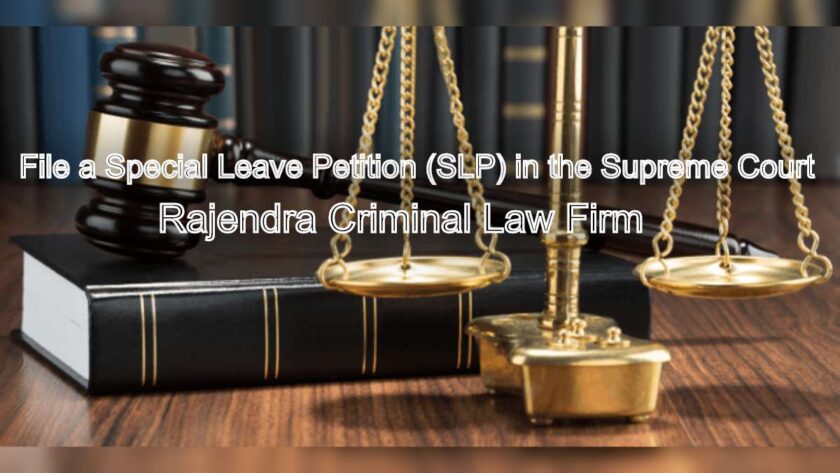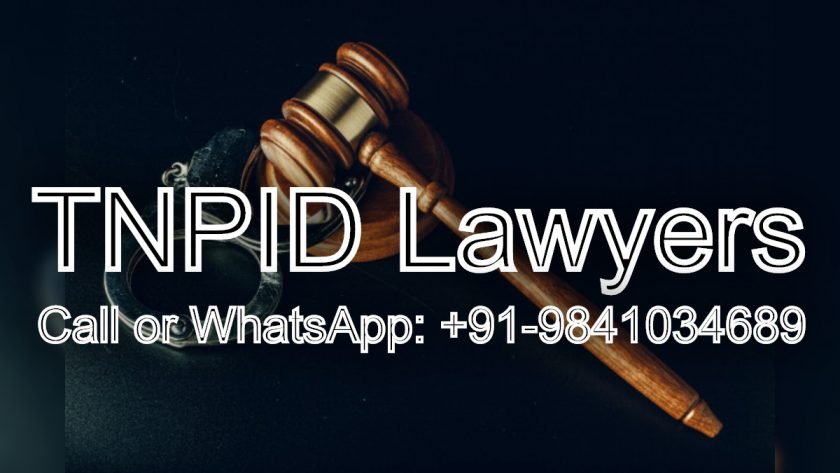How to File a Special Leave Petition? The Supreme Court of India stands as the apex judicial authority. Its power to grant Special Leave Petitions (SLPs) under Article 136 of the Constitution of India is an extraordinary and discretionary jurisdiction. This provision allows an aggrieved party to seek intervention from the highest court, even when other appellate remedies have been exhausted or are unavailable. Rajendra Criminal Law Firm specializes in navigating this complex legal avenue. We offer expert guidance to those seeking justice at the highest level.
How to File a Special Leave Petition (SLP) in the Supreme Court – Step by Step Guide: Rajendra Criminal Law Firm
Understanding the Special Leave Petition
An SLP is not an appeal as a matter of right. Instead, it is a request for the Supreme Court to grant special permission to hear an appeal against any judgment, decree, determination, sentence, or order. This can originate from any court or tribunal within India’s territory. However, it does not apply to judgments from military tribunals. The Supreme Court exercises this discretionary power only in exceptional circumstances. These typically involve a substantial question of law. They also cover situations where gross injustice has occurred. Therefore, the threshold for admission is quite high.
Grounds for Filing an SLP
The Supreme Court usually entertains an SLP under specific conditions. Firstly, a case must involve a substantial question of law. This means a significant and debatable legal issue demands the Supreme Court’s authoritative pronouncement. Secondly, there might be a gross miscarriage of justice. This implies that the lower court or tribunal has gravely erred, leading to an unfair outcome. Thirdly, fundamental rights enshrined in the Constitution may have been violated. Finally, cases involving matters of public importance may also warrant the Supreme Court’s attention. Conversely, the Court typically avoids interfering with concurrent findings of fact unless there is a clear perversity in the findings.
Who Can File an SLP?
Any aggrieved party can file an SLP. This includes individuals, corporations, or even the State. The party must be genuinely affected by the order or judgment of a lower court or tribunal. Nevertheless, the right to file an SLP is not absolute. It depends entirely on the Supreme Court’s discretion to grant leave.
Limitation Period for Filing an SLP
Time is of the essence in legal matters. Generally, an SLP must be filed within a prescribed limitation period. If the SLP is filed against a judgment, decree, or order of any court or tribunal, the limitation period is 90 days from the date of the order. However, if the SLP is filed against an order of a High Court refusing to grant a certificate of fitness for appeal to the Supreme Court, the limitation period is 60 days from the date of such refusal. Any delay beyond these periods requires a convincing explanation through a condonation of delay application. This application must demonstrate sufficient cause for the delay.
Step-by-Step Guide to Filing an SLP
Filing an SLP involves meticulous preparation and strict adherence to the Supreme Court Rules, 2013.
Step 1: Engaging an Advocate-on-Record (AOR)
Firstly, engaging an Advocate-on-Record (AOR) is mandatory for filing an SLP in the Supreme Court. Only an AOR is authorized to file a Vakalatnama, pleadings, and other documents with the Supreme Court Registry. An AOR has cleared a specialized examination and possesses the unique privilege of acting and pleading before the Supreme Court. While other advocates can argue the case, they must be instructed by an AOR. Therefore, finding a competent AOR is the first crucial step.
Step 2: Drafting the Special Leave Petition
Secondly, the drafting of the SLP is a highly specialized task. It requires precision and legal acumen. The SLP must be prepared in Form No. 28 of the Supreme Court Rules. It should include the following key components:
- Synopsis and List of Dates: This provides a concise summary of the case. It also includes a chronological list of all relevant dates and events leading to the filing of the petition.
- Questions of Law: This section outlines the substantial questions of law that arise for the Supreme Court’s consideration. These must be precise and clearly articulated.
- Grounds for Leave to Appeal: Here, the petitioner must explicitly state the grounds on which special leave is sought. This includes explaining why the impugned order has resulted in gross injustice or involves a significant legal issue.
- Facts of the Case: A clear and concise narration of the facts leading to the dispute is essential. This must be presented without any ambiguity.
- Prayer Clause: This specifies the relief sought from the Supreme Court, including any interim reliefs like a stay on the impugned order.
- Declarations: The petition must contain a declaration confirming that no other similar petition has been filed against the impugned order. It must also declare that the annexures are true copies.
The petition must be accompanied by an affidavit verifying the facts stated therein. Every statement of fact must be supported by the affidavit of the petitioner or their authorized representative.
Step 3: Preparing Necessary Documents
Thirdly, gather all essential documents. These documents form the “paper book” of the SLP. The typical documents include:
- Certified copy of the impugned judgment/order from the High Court or other lower court/tribunal.
- Copies of all relevant pleadings, evidence, and orders from the lower courts and tribunals.
- English translations of any documents originally in a vernacular language.
- Vakalatnama duly signed by the petitioner and accepted by the AOR.
- Proof of payment of court fees.
All annexures must be properly indexed and paginated. Furthermore, they must be true copies of the original documents.
Step 4: Filing the SLP with the Registry
Fourthly, once drafted and compiled, the SLP must be filed with the Supreme Court Registry. The petition, along with the required number of copies (usually a minimum of 7), must be submitted. The prescribed court fee must also be paid at this stage. The Registry will check for any defects or deficiencies in the filing. Any objections raised by the Registry must be promptly cured. Failure to cure defects within the stipulated time can lead to the dismissal of the SLP.
Step 5: Preliminary Hearing and Admission
Fifthly, after successful filing and curing of defects, the SLP is listed for a preliminary hearing before a bench of the Supreme Court. This is a crucial stage. The Court examines the petition to determine whether it warrants the grant of special leave. The AOR argues the case for admission. The Court may dismiss the SLP at this stage if it finds no substantial question of law or gross injustice. However, if the Court is satisfied, it issues notice to the respondents. This signifies that leave has been granted. The SLP then converts into a regular appeal, either civil or criminal.
Step 6: Service of Notice and Counter Affidavit
Sixthly, once notice is issued, the petitioner must serve the notice on the opposing party (respondents). The respondents then have the opportunity to file a counter-affidavit. This document presents their version of facts and legal arguments against the SLP. The petitioner may then file a rejoinder affidavit to rebut the arguments in the counter-affidavit.
Step 7: Final Hearing and Judgment
Finally, after the exchange of pleadings, the appeal is listed for a final hearing. Both parties present their detailed arguments before the Supreme Court bench. The Court meticulously reviews the entire record. It considers all legal precedents and arguments. Ultimately, the Supreme Court delivers its final judgment. This judgment can uphold, modify, or set aside the impugned order. Its decision is binding on all lower courts and tribunals.
Role of Rajendra Criminal Law Firm
Rajendra Criminal Law Firm possesses extensive experience in handling complex litigation before the Supreme Court. Our team of seasoned advocates understands the nuances of drafting compelling SLPs. We meticulously prepare each case, ensuring all legal and factual aspects are robustly presented. We guide our clients through every stage, from initial consultation to final arguments. Our commitment remains steadfast: to provide the best possible legal representation and secure favorable outcomes for our clients.
Frequently Asked Questions
An SLP is not an appeal as a matter of right. It is a request for the Supreme Court to grant special permission, or “leave,” to hear an appeal. This is a discretionary power of the Supreme Court under Article 136 of the Constitution.
Yes, it is absolutely mandatory. Only an Advocate-on-Record (AOR) is authorized to file a Vakalatnama, pleadings, and other documents with the Supreme Court Registry.
Generally, an SLP against a judgment, decree, or order of any court or tribunal must be filed within 90 days from the date of the order. If the SLP is filed against an order of a High Court refusing to grant a certificate of fitness for appeal to the Supreme Court, the limitation period is 60 days from the date of such refusal.
If the Supreme Court admits an SLP during the preliminary hearing, it grants “leave.” The Special Leave Petition then converts into a regular appeal (either civil or criminal). Following admission, the Court issues notice to the respondents (opposing parties), who then have the opportunity to file a counter-affidavit.
The Supreme Court typically entertains an SLP if the case involves a substantial question of law that requires authoritative interpretation, if there has been a gross miscarriage of justice by the lower court or tribunal, or if fundamental rights have been violated.
Conclusion
Filing a Special Leave Petition in the Supreme Court is a powerful, yet challenging, legal recourse. It demands a thorough understanding of constitutional law, Supreme Court Rules, and intricate procedural requirements. Success hinges on meticulous preparation, strong legal arguments, and expert representation. By following this step-by-step guide and leveraging specialized legal expertise, individuals and entities can effectively pursue justice at the highest judicial forum in India. Rajendra Criminal Law Firm stands ready to be your trusted partner in this critical endeavor.
Read More
- Mastering Commercial Contracts: Legal Insights for Modern Businesses
- Curative Petition in Supreme Court: Last Hope After Dismissal of Review
- How to Lodge Complaints About State Public Works Department (PWD) Officers
- Steps to File Complaints Against Tamil Nadu State Electricity Board (TNEB) Officers
- Filing a Grievance Against State Transport Department Officers
- Supreme Court of India’s Official Website:





